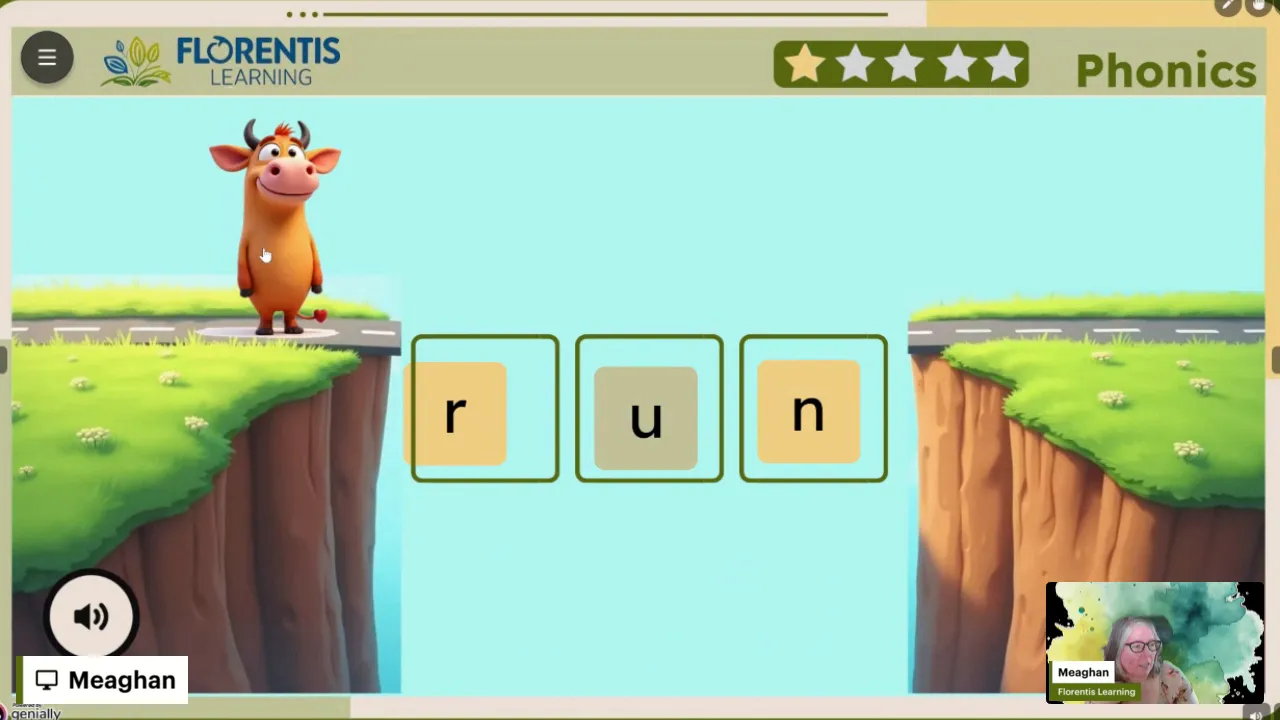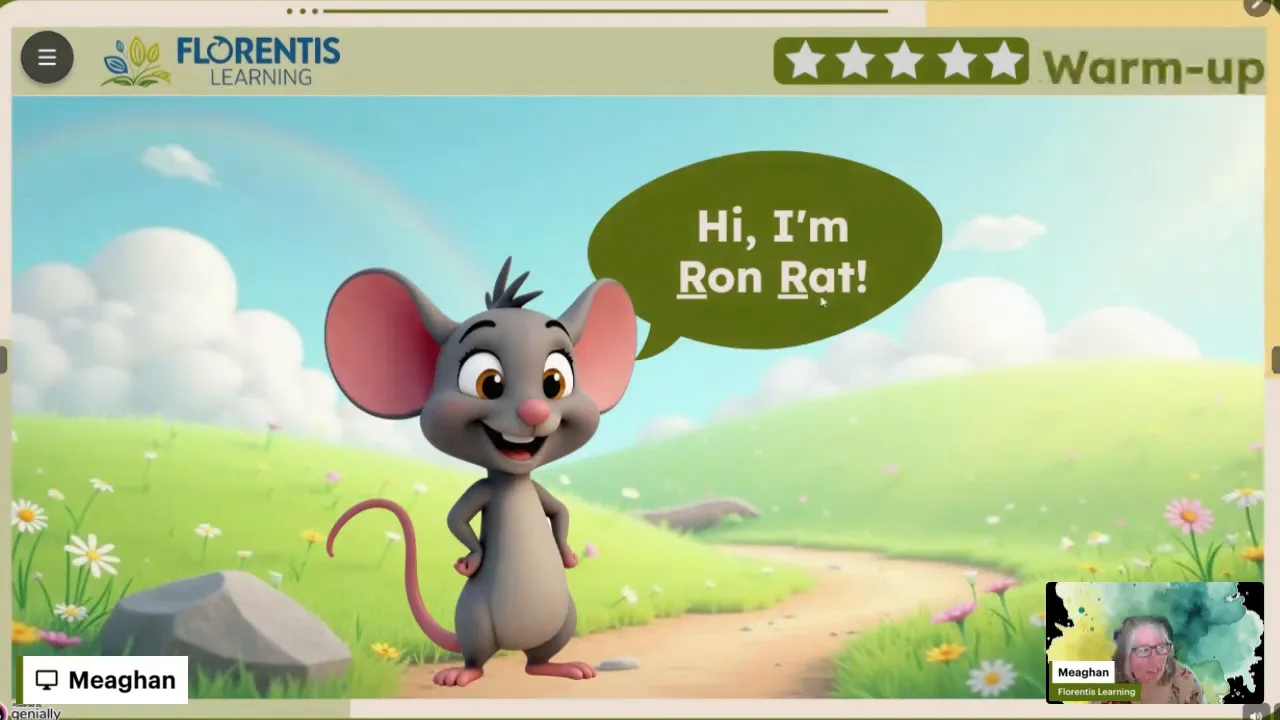Teaching phonics online can be a rewarding yet challenging experience, especially when working with young ESL learners. My name is Meaghan, and I’m the founder of Florentis Learning. In this guide, I’ll share practical, proven strategies to help you teach phonics online effectively—without relying on boring sound drills. These methods are designed to build phonological awareness, blending and segmenting skills, fluency, and reading confidence in a way that’s engaging and meaningful for children.
Why Phonics Still Matters in ESL Education
Phonics is the critical bridge to reading. Over the years, research has shown that simply drilling isolated sounds doesn’t help students read fluently or comprehend text. For many ESL learners, phonics instruction is essential because it teaches students how to decode words by understanding letter-sound relationships.
Without phonics, students may be able to identify individual letter sounds—like “b says /b/” or “a says /a/”—but struggle to blend those sounds into words such as “bat.” This gap occurs because drilling sounds in isolation doesn’t promote reading fluency or comprehension.
Before diving into phonics, it’s important to build phonological awareness—the ability to hear and play with sounds. This skill is especially crucial for ESL learners who might not have certain English sounds in their native language. For example, some students mix up sounds like /b/ and /p/, or /i/ and /e/ because those distinctions don’t exist in their first language.

The Pyramid of Effective Phonics Instruction
Effective phonics instruction builds step-by-step, like climbing a ladder. Starting at the base, we have:
- Phonological Awareness: Listening to and manipulating sounds through rhyming, syllables, and identifying beginning and ending sounds.
- Sound-Letter Correspondence: Learning what each letter sounds like through explicit, systematic instruction.
- Blending and Segmenting: Also known as decoding and encoding, this involves reading words by blending sounds and spelling words by segmenting sounds.
- Fluency: Reading smoothly and accurately by practicing with decodable texts repeatedly.
- Comprehension: The ultimate goal where students understand what they read, relying on all the previous layers.
Skipping foundational steps like phonological awareness or blending can cause students to struggle with fluency and comprehension later on.
Why Traditional Drilling Isn’t Enough
Common drilling activities such as repeating sounds, matching sounds to letters, or multiple-choice listening exercises serve a purpose but shouldn’t dominate your phonics teaching. These drills focus on isolated sound production and often skip vital steps like blending, segmenting, and fluency-building.
More importantly, drilling can be boring and repetitive, especially for young learners aged 3 to 7 who are learning English as a second language. Without practical application, students don’t see how sounds combine to form words and stories, and the knowledge doesn’t stick in their long-term memory.
Four Key Strategies to Teach Phonics Online Effectively
To make phonics instruction engaging and effective online, I recommend incorporating the following four strategies:
1. Multisensory Learning
Combine sight, sound, and movement to strengthen memory and support auditory discrimination. For example, when teaching the letter “S,” you might slither your hand like a snake or trace the letter in the air. If you’re using co-browsers or annotation tools like Zoom, students can draw letters on the screen or use their fingers to trace them.
This physical engagement helps ESL learners “feel” the sound, not just hear it, which deepens learning. Young learners especially benefit from movement, and it keeps their attention focused particularly when you teach phonics online.
2. Connecting Sounds to Meaning
Make every sound memorable by associating it with a story, image, or character. In our phonics curriculum, each letter sound is linked to a fun character, like Sam Snake for “S,” Dan Dog for “D,” or Ellie Elephant for “E.” These characters give sounds emotional context and make learning enjoyable.
Encourage students to find personal connections too, such as recognizing the first letter of their own name. This strengthens memory and creates a meaningful learning experience.
3. Word Building Practice
Hands-on blending practice bridges the gap between knowing individual sounds and reading words. Use tools like letter tiles or drag-and-drop activities where students sound out, tap, and blend letters together to form words.
For example, students might tap their fingers or hands while saying sounds and then blend them to read the word “cat.” Incorporating interactive games such as puzzles, “feeding the monster” word games, or moving characters across a screen makes this practice fun and engaging.

4. Reading with Meaning from the Start
After learning just a few sounds, students should be able to read simple decodable sentences that bring joy and excitement. This early success motivates learners and impresses parents, who see tangible progress quickly.
Examples of early reading sentences include:
- “Umi is in the mud.”
- “The mug is big.”
- “Pat sat in the pit.”
These sentences blend new phonics skills with high-frequency words and emotional context, supported by vivid pictures that help students develop meaning-making skills.

Exploring the Florentis Learning Phonics Curriculum
Our phonics curriculum is designed to incorporate all these strategies with interactive lessons suitable for online teaching platforms like Zoom, Voov, or co-browsers such as Koala Go. Each lesson includes:
- Character introductions to connect sounds with fun images and stories.
- Encoding and decoding activities built into every lesson.
- Interactive games like puzzles, matching, and “feeding the monster.”
- Mini decodable stories that students can read with or without support.
- Built-in rewards and feedback to keep learners motivated.
For example, in the letter “R” lesson, students meet Ron Rat and practice recognizing the “r” sound through chants, tracing letters, and playing interactive games where they help Ron run away from Dan Dog. Vowels are color-coded in green to aid recognition, and students enjoy dragging letters to spell words like “run” and “ram.”

The Core ESL curriculum integrates phonics in each lesson however the Florentis Learning phonics lessons are designed to help give your students a strong start. These phonics lessons work well as standalone phonics lessons or to supplement the Core ESL Curriculum.
Getting Started with Florentis Learning
If you want to try these strategies and see the curriculum in action, you can download a free Phonics Sample Pack from our website. The pack includes a fully interactive phonics lesson that you can use immediately with your students.
For more extensive teaching, we offer a Complete Classroom Curriculum with over 350 lessons across six levels, including beginner writing and conversation curricula. The founder’s price is currently $9.99/month, but this introductory offer won’t last long.
| Feature | Description |
|---|---|
| Phonological Awareness | Listening, rhyming, syllables, identifying sounds |
| Sound-Letter Correspondence | Explicit teaching of letter sounds with fun characters |
| Blending & Segmenting | Interactive word building and spelling activities |
| Fluency | Repeated reading of decodable texts for smooth reading |
| Comprehension | Understanding meaning through connected sentences and stories |
Visit Florentis Learning Phonics Curriculum to explore available lessons and sign up.
Frequently Asked Questions
Q: Why shouldn’t I rely solely on drilling sounds?
A: Drilling focuses on isolated sounds without connecting them to reading words or comprehension. It’s often boring and doesn’t help students blend sounds or develop fluency, which are essential for reading.
Q: How can I make phonics lessons engaging online?
A: Use multisensory approaches—combine movement, visuals, and sounds. Incorporate characters, stories, interactive games, and allow students to physically trace or build words using digital tools. Find more games you can use in your classroom in this article Gamify Lessons: 5 Easy Tricks to Make Learning Fun
Q: When should I start blending sounds into words?
A: As soon as students know 2-3 sounds that blend well together, introduce blending. Early blending builds confidence and moves phonics from memorization to practical literacy.
Q: Can these phonics lessons work for older or intermediate ESL learners?
A: Yes! Even intermediate learners benefit from phonics activities to decode unfamiliar words and strengthen foundational skills they may have missed earlier.
Q: What technology do I need to teach phonics online effectively?
A: A co-browser tool like Koala Go allows students to interact directly with lessons by dragging, drawing, and moving elements on the screen. Zoom’s annotation features can also be useful.
Conclusion
Teaching phonics online doesn’t have to be dull or ineffective. By focusing on phonological awareness, using multisensory learning, connecting sounds to meaningful characters and stories, practicing word building, and encouraging early reading with decodable texts, you can create a fun and motivating learning experience for ESL kids.
Florentis Learning’s phonics curriculum offers a comprehensive, interactive approach that supports these strategies and works seamlessly across popular online teaching platforms. Whether you’re teaching young beginners or intermediate learners, these methods will help your students build strong reading skills and confidence.
Ready to transform your phonics teaching? Grab the free sample pack today and see the difference engaging phonics lessons can make.
Because Your Time Matters — and So Does Your Teaching! |
|
Ready to stop piecing together lessons and start teaching with confidence? Join the Complete Classroom Curriculum and get instant access to over 180 ready-made, engaging ESL lessons from Pre-A1 to B1—all designed for online teachers like you. ✅ No more last-minute planning ✅ Built-in speaking, reading, grammar, and writing practice ✅ Perfect for one-on-one and small group classes Start today and make every lesson count. |
| Join the Complete Classroom Curriculum Now! |


Leave a Reply